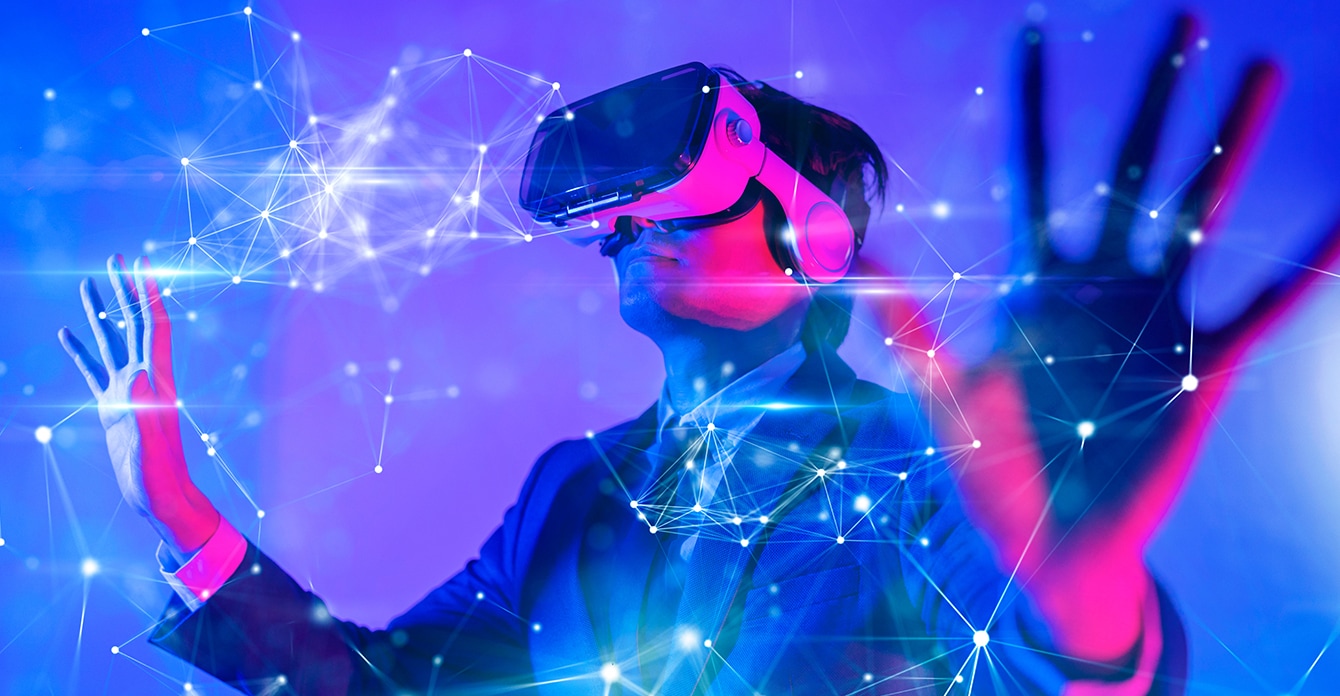Late in 2021, the term “metaverse” managed to squeeze its way into our cultural lexicon right there alongside vaxxing, minimony, lockdown foot, and comfury.
But what exactly is the metaverse? And is it really worthy of all the hype?
Metaverse doesn’t refer to one specific, monolithic technology. Instead, it refers to ways in which we interact with technology. Simply put, the metaverse includes any experience on the internet that is persistent, immersive, three dimensional, and virtual, i.e., not happening in the real world.
While the term seems tailor-made for video games and VR technology, it also refers to digital economies where users can create, buy, and sell goods, and to other pandemic-driven experiences that are now taking place virtually rather than in person.
There’s no question that this concept is still in its infancy—and what the metaverse looks like in 10 years will be much different than it does now—but if 2022 turns out to be the breakout year some are predicting, now is the time for brands to understand, and perhaps begin to explore this potentially powerful new way for consumers to connect, communicate, and transact.
Here are some examples to help get you started.
Brands connect metaversal experiences with real-life products
Fast casual restaurant Chipotle “opened” a restaurant in the virtual world of online game Roblox, enabling players to complete an in-game quest to receive a coupon code redeemable for real-life purchases.
Leveraging the digital economy (and a slightly higher price point), Coca-Cola celebrated International Friendship Day by auctioning off—for $575K—a four-piece non-fungible token (NFT) “Friendship Box” (much like “loot boxes” that are popular in video games). In addition to the NFTs—which include a Coke-branded jacket that can be worn in the Decentraland open-source 3D virtual world platform—the box included a real-life, fully stocked Coke refrigerator. (Hence, the hefty price-tag 😊.)
Business conferences and conventions go virtual
Move over Zoom mega-meetings: AfroTech, a technology, investing, and wealth building platform for the Black community, created AfroTech World to support its 2021 annual conference. Attendees created their own virtual avatars to interact with other conference-goers, sit in on presentations—and visit the more than 170 sponsors that paid for booth partnerships in the virtual expo hall.
“In-world” advertising offers a pop-up alternative
Football Manager, a football (aka soccer) management simulation game that allows players to step into the shoes of a team’s general manager, is allowing advertisers to step into the stadium too. Rather than using traditional pop-up ads that frustrate mobile gaming users, brands can buy placements on virtual billboards at matches, offering an unintrusive, contextually relevant experience.
These are just a few of the brands that are already beginning to shape the marketing opportunities inherent in the metaverse and to move consumer experiences seamlessly between the real and virtual worlds.
While the metaverse may not be right for your brand right now, it’s certainly worth paying attention to. Those that do are likely to be ahead of the curve as the metaverse continues to evolve—at what most believe will be an incredibly rapid pace.
To marketers, metaverse in 2022 is what social media was a few short decades ago: It offers the potential to connect to targets in new ways, and to deliver more meaningful experiences than ever before. Proceed with caution but proceed nonetheless: Sit on the sidelines too long and your brand risks being left behind.









